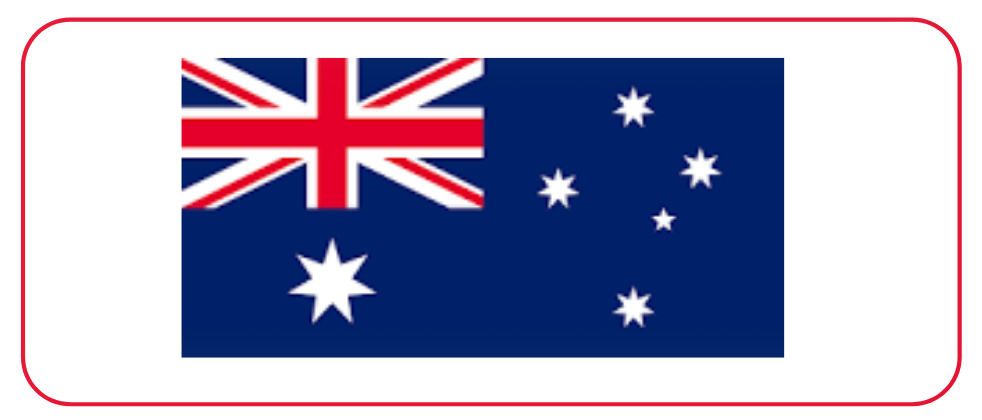ROLE OF CAPPARIS SPINOSA LEAVES IN AMELIORATING TRICHLOROACETIC ACID INDUCED HEMATOTOXICITY IN SWISS ALBINO MICE
DOI:
https://doi.org/10.53555/eijas.v4i2.126Keywords:
Capparis spinosa, trichloroacetic acid, blood bone marrow smear, miceAbstract
The present study was amied to evaluate the effect of leaves powder of Capparis spinosa which using in Libya as folk medicine for many ailments as cancer treatment against morphological alterations in blood and bone marrow cells in the blood and bone marrow smears of male mice intoxicated with trichloroacetic acid (TCA). A hundred male mice were divided in to 5 groups. Group I was considered as a control and received only distilled water, group II treated orally with honey (40 mg/kg bw) for 3 weeks, group III treated orally with a mixture of C. spinosa leaves powder and honey(40 mg/kg bw) for 3 weeks, group IV treated orally with TCA in drinking water (500mg/kg bw for 3 and 6 weeks, then left for 3 weeks for self-recovery), group V was given TCA in drinking water (500mg/kg bw) for 6 weeks, then treated with a mixture of C. spinosa and honey for 3 weeks. Blood and bone marrow samples were collected for the smears preparations and evaluated morphological alterations in blood and bone marrow cells. Administration of TCA only in drinking water showed many abnormalities in blood and bone marrow smears which were more pronounced in TCA for 6 weeks and TCA recovery groups. Administration of mixture of leaves powder of C. spinosa and honey to TCA intoxicated mice lessened most abnormalities (anisocytosis and poikilocytosis) in blood and bone marrow smears. Result of the present work suggested that the dose of leaves powder of C. spinosa used in this investigation have no hematotoxicity and have some beneficial effect to inhibition TCA induce hematotoxicity in mice.
References
. Al-Snafi, A.E. (2015). The chemical constituents and pharmacological effects of Capparis spinosa - An overview. Indian Journal of Pharmaceutical Science and Research, 5(2):93100.
. Tlili , N., Elfalleh, W., Saadaoui, E., Khaldi, A., Triki, S. and Nasri, N. (2011). The caper (Capparis L.): Ethnopharmacology, phytochemical and pharmacological properties. Fitoterapia, 82(2):93-101.
. Al-Said, M.S., Abdelsattar, E.A., Khalifa, S.I.and El-feraly, F.S. (1988). Isolation and identification of an anti-inflammatory principle from Capparis spinosa. Pharmazie, 43: 640-641.
. Boumerfeg, S., Ameni, D., Adjadj, M., Djarmouni, M., Khennouf, S., Arrar, L. and Baghiani, A. (2012). Antihymolyticc and Antioxidant Effects of Medicinal Plant Capparis spinosa L. Journal of Life Sciences, 6: 637-643.
. Tlili, N., Nasri, N. Saadaoui, E., Khaldi, A., Triki, S. (2009). Carotenoid and tocopherol composition of leaves, buds, and flowers of Capparis spinosa grown wild in Tunisia. J Agric Food Chem .,57(12):5381-5385.
. Duman, H., Canatan,D., Alanoglu,G., Sutcu,R. and Nayir.T.(2013). The antioxidant effect of Capparis ovate and deferasirox in patients with Thalassemia major. J.Blood DisordersTransf., 4:1-4.
. Zuo, Y. (2014).High-Performance Liquid Chromatography (HPLC): Principles, Procedures and Practices. Nova Science Publishers, Inc. New York.
. Sher, H. and Alyemeni, M. (2010). Ethnobotanical and pharmaceutical evaluation of Capparis spinosa L, validity of local folk and Unani system of medicine. J. Med. Plant. Res., 4(17):1751-1756.
. Kamalakkannan, N. and Prince, P.S.(2006). Antihyperglycaemic and antioxidant effect of rutin, a polyphenolic flavonoid, in streptozotocin-induced diabetic wistar rats. Basic Clin Pharmacol Toxicol., 98:97-103.
. Sreenivas, S.A., Venu Gopal, Y., Ravindranath, A., Kalpana, G. and Rajkapoor, B. (2012). Antitumor and Antioxidant Activity of Capparis sepiaria Against Dalton’s Ascites Lymphoma in Rodents. Academic J. Cancer Res., 5(2):46-52.
. Bhanu Prasad K,. (2011). Acute and chronic toxicity studies of ethanolic extract of Capparis aphylla Roth. International Journal of Advanced Pharmaceutics,1(1):35-39.
. Ahmed, O. M. M., Adam, S. E. I. (1980) .The toxicity of capparis tomentosa in goats. Journal of Comparative Pathology, 90(2):187-195.
. NIOSH. (National Institute for Occupational Safety and Health) (2003). NIOSH pocket guide to chemical hazards. (97-140). Cincinnati, OH. http://www.cdc.gov/niosh/npg/npgdcas.html.
. IPCS. (International Programme on Chemical Safety). (2000). Disinfectants and disinfectant by-products. In Environmental Health Criteria, Geneva, Switzerland: World Health Organization.
. International Agency for the Research on Cancer (IARC) (2004). Some drinking-water disinfectants and contaminants, including arsenic. IARC Monogr Eval Carcinog Risks Hum, 84:1-477.
. Reimann, S.,Grob, K. and Frank, H.(1996).Chloroacetic acids in rainwater. Environ Sci Technol., 30:2340-2344.
. U.S. Environmental Protection Agency (U.S. EPA. 2005). Drinking water addendum to the criteria document for trichloroacetic acid. (EPA 822-R-05-010). Washington, DC: U.S. EPA Office of Water.
. Celik, I. (2007). Determination of toxicity of trichloroacetic acid in rats: 50 days drinking water study. Pestic Biochem Physiol., 89:39-45.
. Celik I. and Temur A. (2009) Determination hematotoxic and hepatotoxic effects of trichloroacetic acid at sublethal dosage in rats. Food and Chemical Toxicology, 47(6):13241326.
. Poon, R., Nadeau, B. and Chu, I. (2000). Biochemical effects of chloral hydrate on male rats following 7-day drinking water exposure. J Appl Toxicol., 20:455-61.
. Acharya, S., Mehta, K., Rodriguez, S., Pereira, J., Krishnan, S. and Rao. C.V. (1997). A histopathological study of liver and kidney in male Wistar rats treated with subtoxic doses of t-butyl alcohol and trichloroacetic acid. Exp Toxicol Pathol. 49(5):369-73.
. Mather, G.G., Exon, J.H. and Koller, L.D. (1990) .Subchronic 90-day toxicity of dichloroacetic and trichloroacetic acid in rats. Toxicology, 64:71-80.
. International Agency for the Research on Cancer (IARC) (1995). Dry cleaning, some chlorinated solvents and other industrial chemicals. Vol 63. IARC. Lyon.
. Paget, G.E. and Barnes, J.M.(1964).Evaluation of drug activities. In: Pharmacometrics Laurence DR, Bacharach AL, editors. New York: Academic Press, pp.161.
. Bull, R.J., Sanchez,I.M., Nelson, M. A. ,Larson, J. L. and Lansing, A. J. (1990) . Liver tumor induction in B6C3F1 mice by dichloroacetate and trichloroacetate. Toxicol., 63(3):341-359.
. Pereira, M.A., Kramer, P.M., Conran, P.B. and Tao, L. (2001). Effect of chloroform on dichloroacetic acid and trichloroacetic acid-induced hypomethylation and expression of the c-myc gene and on their promotion of liver and kidney tumors in mice. Carcinogenesis, 22:1511-1519.
. Lewis, S.M., Bain, B.J. and Bates, I.B. (2001). Dacia and Lewis Practical haematology, 9th ed.London Edimburgh New York Philadelphia ST Louis Toronto.
. Travlos,G.S.(2006).Normal structure, function, and histology of the bone marrow. Toxicol Pathol., 34(5):548-565.
. Lund, J. E. (2000). Toxicologic effects on blood and bone marrow, in Schalm’s Veterinary Hematology, 5th edition (B. F. Feldman, J. G. Zinkl, and N. C. Jain, eds.), pp.44-50. Lippincott, Williams and Wilkins, Philadelphia.
. Ryan, D. H. (2001). Examination of the blood. In Williams Hematology, 6th edition. (E. Beutler, M. A. Lichtman, B. S. Coller, T. J. Kipps, and U. Seligsohn, eds.), pp. 9-16, McGraw-Hill, New York.
. Weiss, L., and Geduldig, U. (1991). Barrier cells: stromal regulation of hematopoiesis and blood cell release in normal and stressed murine bone marrow. Blood, 78:975-90.
. Wierda, D. (1990). Benzene toxicity to bone marrow stromal cells. Society of Toxicologic Pathologists Great Lakes Region Discussion Group: Bone Marrow Toxicity. Toxicol Pathol., 18:710-711.
. Reagan, W. J. (1993). A Review of myelofibrosis in dogs. Toxicol Pathol., 21:164-9.
. Weiss, D. J. (2000). Aplastic anemia. In Schalm’s Veterinary Hematology, 5th edition (B. F. Feldman, J. G. Zinkl, and N. C. Jain, eds.), pp. 212-15. Lippincott, Williams and Wilkins, Philadelphia, PA.
. Harper, H.A. (1973). Review of Physiological Chemistry, 14th ed. Lange Medical Publications, California.
. Adeneye, A.A., Ajagbonna, O.P., Adeleke, T.I. and Bello, S.O. (2006). Preliminary toxicity and phytochemical studies of the stem bark aqueous extract of Musanga cecropioides in rats. Journal of Ethnopharmacology, 105:374-379.
. Paprika, M.V. and Sharma, B.B. (2003). Effect of oral administration of herbicide diclofop on some hematological parameters in mouse. Journal of Cell and Tissue Research, 3:12-17.
. Ferzand, R., Gadahi, J.A., Saleha, S. and Ali, Q. (2008). Histological and haematological disturbance caused by arsenic toxicity in mice model. Pak J Biol Sci., 11(11):1405-1413.
. Yu, M.H. (2005). Soil and water pollution: Environmental metals and metalloids. Environmental Toxicology: Biological and Health Effects of Pollutants. CRC Press, pp.185-226.
. Nikinmaa, M. (1992). How does environmental pollution affect red cell in fish? Aquat Toxicol., 22: 227-238.
. Koc, N.D., Muslu, M.N., Sesal, C. and Kayhan, F.E.(2008). Histopathological effects of Malathion and endosulfan on blood cells of Wistar albino rats (Rattus norvegicus). J Appl Biol Sci .,2:105-108.
. Yao, C., Li, X. and Xiong, Y.(2005). Instant Effects of Radiofrequency Electromagnetic Wave on Hemoglobin in Single Living Intact Red Blood Cell. Chinese Chermical Letters, 16(8):1121- 1124.
. Hamidi, H. and Tajerzadeh, H.(2003). Carrier erythrocytes: An overview. Drug Delivery, 10:9-20.
. Snyder, L.M., Fotier, N.L., Trinor, J., Jacobs, J., Leb, L., Lubin,S. et al., (1985). Effect of hydrogen peroxide exposure on normal human erythrocyte deformability, morphology, surface characteristics and spectrin-hemoglobin crosslinking .Journal of Clinical Investigation, 76:1971-1977.
. Hassoun, EA. Cearfoss,J. and Spildener,J.(2010). Dichloroacetate- and trichloroacetateinduced oxidative stress in the hepatic tissues of mice after long term exposure. J Appl Toxicol., 30(5): 450-456.
. Rice-Evans,C.A., Miller, N.J. and Paganga, G.(1996). Structure-antioxidant activity relationships of flavonoids and phenolic acids.Free Radical Biology and Medicine, 20:933956.
. Kitagawa, H., Sakamoto,H. and Tano,Y. (2004). Inhibitory effects of flavonoids on free radical-induced hemolysis and their oxidative effects on hemoglobin. Chemical and Pharmaceutical Bulletin, 52:999-1001.
. Kulisic-Bilusic, T., Schmoller, K., Schnabele, K., Siracusa, L. and Ruberto, G. (2012). The anticarcinogenic potential of essential oil and aqueous infusion from caper (Capparis spinosa L.). Food Chemistry, 132:261-267.
. Behnaz, M., Davood,E.A. And Anoosh,E. (2012). Caper the Mystique of the recent century. Intl J Agri Crop Sci., 4(10):604-608.
. Yang, T., Wang, C., Liu, H., Chou, G., Cheng, X. and Wang, Z.(2010).A new antioxidant compound from Capparis spinosa. Pharm Biol., 48(5):589-594.
. Ping, K.Y., Darah,I., Chen,Y., Sreeramanan,S. and Sasidharan,S.(2013). Acute and subchronic toxicity study of Euphorbia hirta L. Methanol Eextract in rats BioMed Research International, 2013: 1-14.
. Sharma, R., Panwar, K. and Mogra, S.(2013). Alterations in developing rats after prenatal and postnatal exposure to lead actate and vitamins. IJPSR. 4(8):3214-3224.
. Taghavi, M.M., Nazari M., Rahmani R.,Sayadi A, Hajizadeh MR., Mirzaei,M.R., Ziaaddini,H., Hosseini-Zijoud,S.M. and Mahmoodi, M.(2014). Outcome of Capparis spinosa fruit extracts treatment on liver, kidney, pancreas and stomach tissues in normal and diabetic rats. Med chem., 4:717- 721.
. Panico, A.M., Cardile, V., Garufi, F., Puglia, C., Bonina, F. and Ronsisvalle, G. (2005). Protective effect of Capparis spinosa on chondrocytes. Life Sci., 77(20): 2479-2488.
. Halliwell, B. and Gutteridge, J.M.C. (1989). Free Radicals in Biology and Medicine, 2nd ed., Oxford University Press: London, UK, pp. 126-131.
. Bahar, E., Akter, K.M., Lee, G.H., et al. (2017). Β-Cell protection and antidiabetic activities of Crassocephalum crepidioides (Asteraceae) Benth. S. Moore extract against alloxaninduced oxidative stress via regulation of apoptosis and reactive oxygen species (ROS). BMC Complement Altern Med., 17(1):179.
Downloads
Published
Issue
Section
License

This work is licensed under a Creative Commons Attribution-NonCommercial-NoDerivatives 4.0 International License.








 Licensed under CC BY 4.0 International.
Licensed under CC BY 4.0 International.